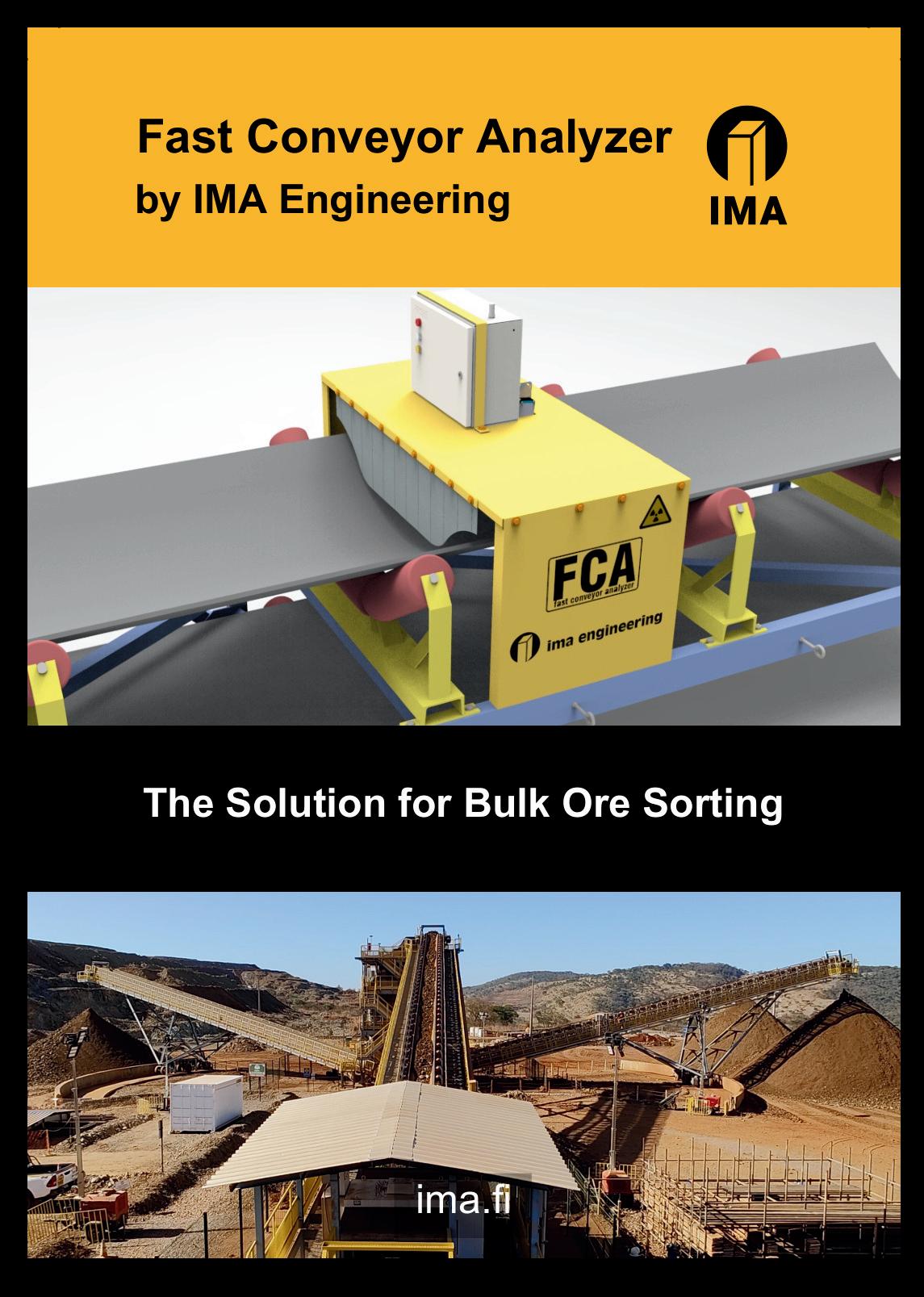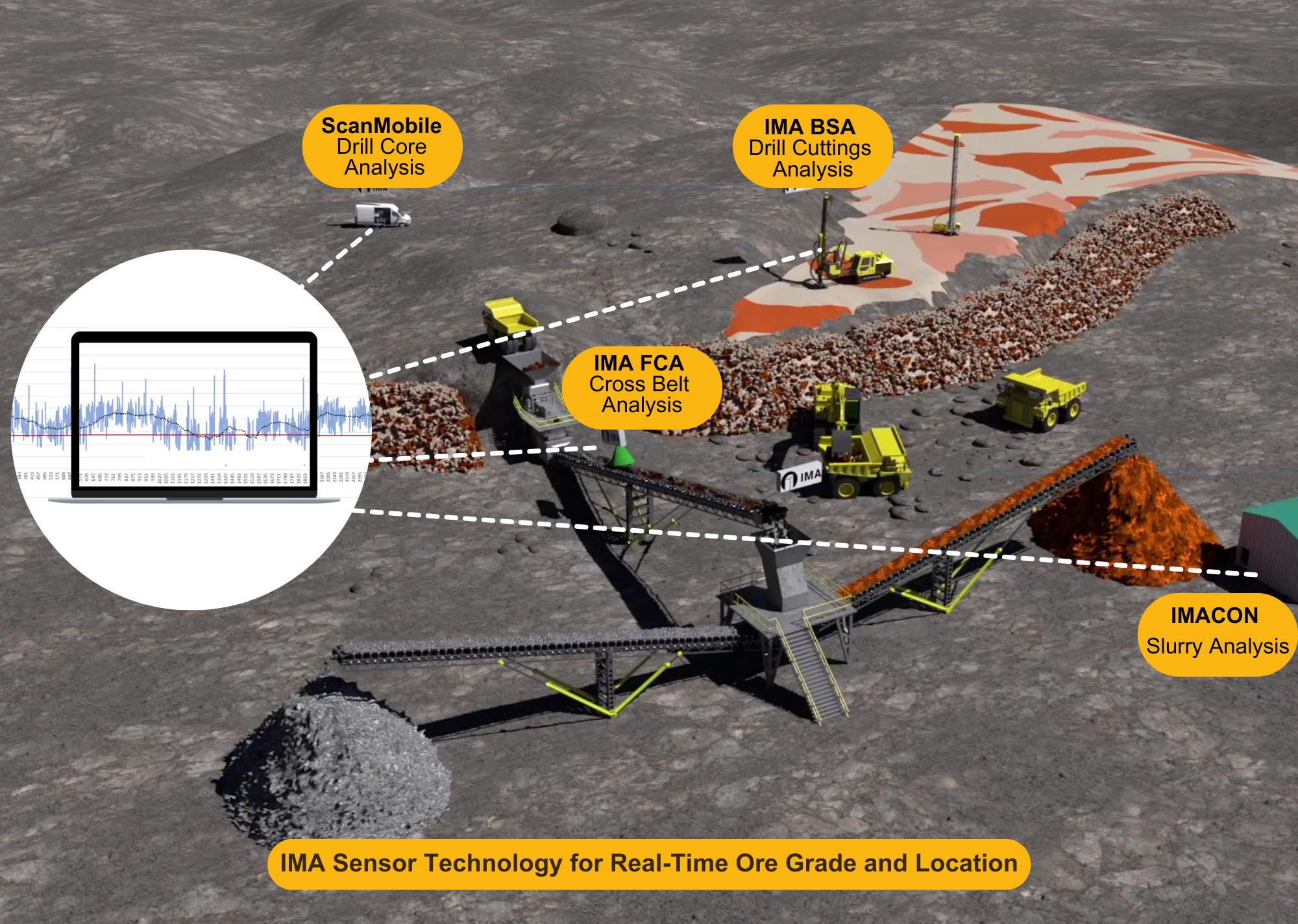
7 minute read
Ville Hakala: Tackling issues of waste rock dilution
from Materia 4/2023
Introduction
Copper is one of the most widely used metals in the world, and with the global green energy transition the demand for copper is expected to increase significantly by almost doubling during the years from 2020 to 2040 [1]. This trend implies a huge need for new copper sources, as the current supply pipeline is insufficient to meet the future demand. However, while the demand for copper increases, the supply of high-grade copper ore decreases. For example, the average ore grade of copper in the United States dropped from about 2,5% in 1900 to 0,4% in 2019 [2], while the global average ore grade was not much higher, estimated to be 0,6% in 2019 [3]. This poses a challenge for the mining industry, which must prepare for extracting lower grade copper ore that contains less copper and more gangue.
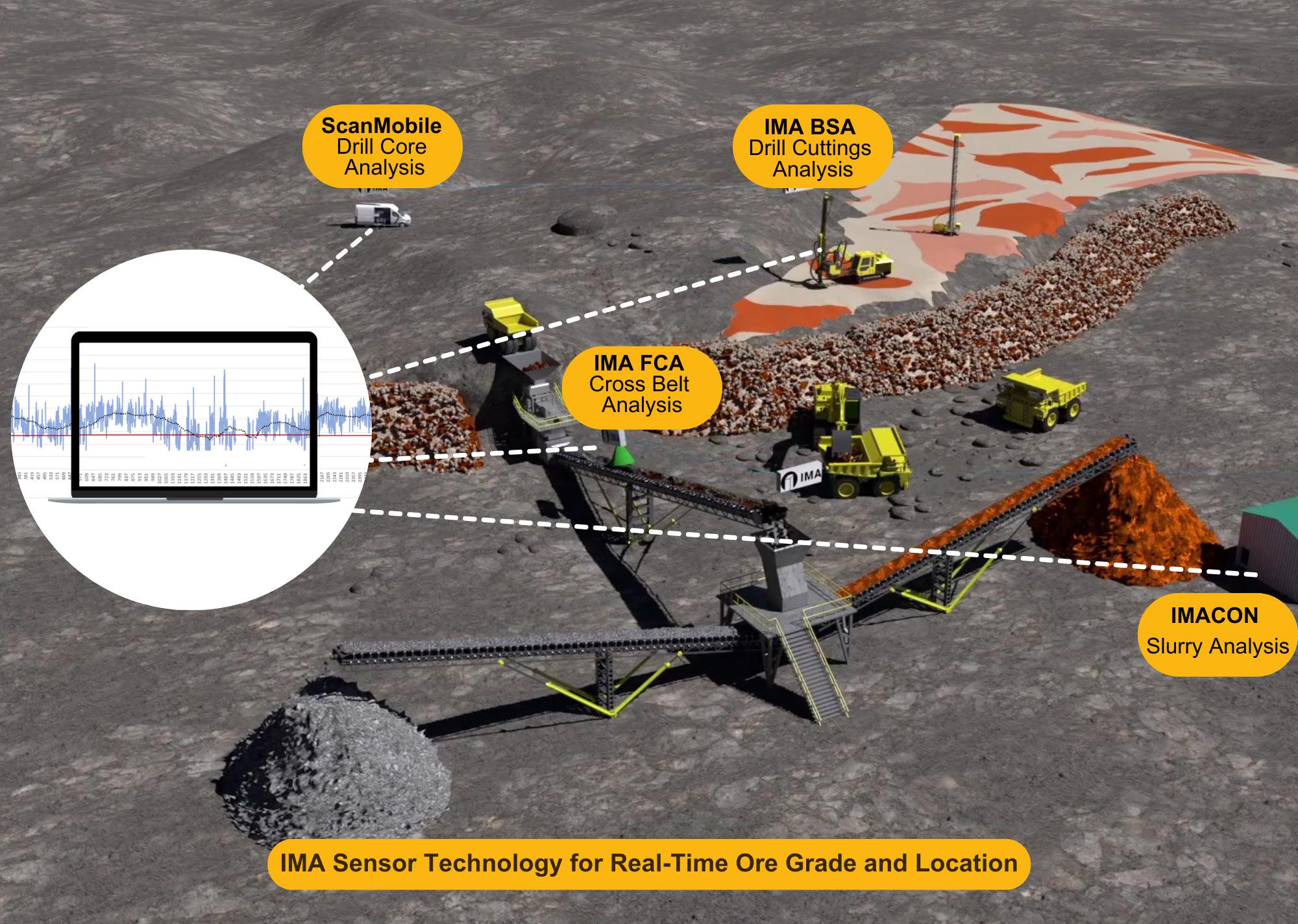
Lower grade copper ore requires more energy and water to process, which increases the environmental and social impacts of mining. And as more non-valuable rock goes through the concentrator, the more waste is produced in form of tailings. Additionally, as the more easily accessible deposits close to surface have been exploited, the miners need to go deeper to mine the important metal, resulting in higher mining costs.
One solution to the issue of low-grade mining is to improve the efficiency of the extraction and processing methods to reduce waste rock dilution (WRD). Waste rock dilution refers to the amount of nonore material that is mixed with the ore during the extraction process, which lowers the grade and quality of the product. Currently waste rock dilution (and ore losses) is only estimated from mining block models, and it is not measured. To measure and quantify the real impact of WRD, the mine needs to have an on-line analyzer for the mill feed after primary crusher on conveyor belt for analyzing the material in short time frames (e.g., 10 seconds). The longer the time the more averaging is being done in the analysis. Ore and waste material mixture gets homogenized in further crushing, screening, in intermediate stockpile and in grinding mills.
Reducing waste rock dilution can have significant impact on the costs and environmental impact of mining operations. Additionally, the waste rock occupies concentrator capacity, i.e., replaces valuable ore, which has a significant negative value for the mine profitability that we will demonstrate in the case study. There are methods that can help to reduce waste rock dilution, such as improved drilling and blasting practices. There are also modern processes that use advanced technology to tackle the issue. In this paper we introduce IMA Engineering’s solutions for mine grade control and for ore sorting which help to reduce both internal and external waste rock dilution.
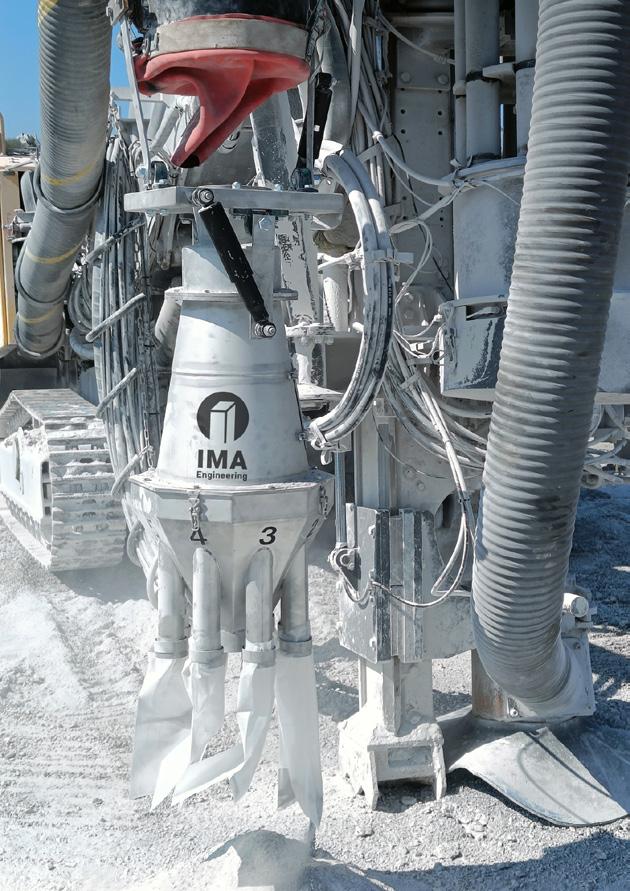
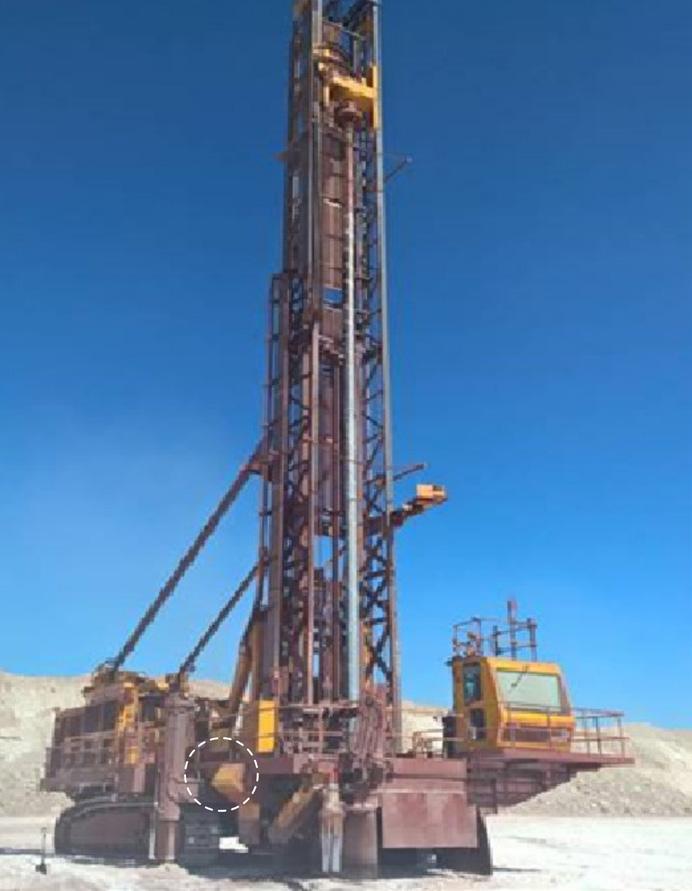
IMA Engineering Company
IMA Engineering (“IMA”) is a leading provider of sampling and analysis solutions for the mining industry. Mines around the world are using IMA’s innovative mine-to-mill sensor technologies that provide real-time measurement of ore grade and geo-metallurgical properties. With over 25 years of experience in developing and delivering online analyzers for various mineral applications, IMA is a pioneer in the field of applying sensor solutions for crushed ore over conveyor belt, for drill cuttings, for diamond drill cores, and for mineral slurries. IMA works closely with mine clients to understand their needs and offers the best solutions that optimize their mining processes to enable the profitable operation even with challenging ore bodies and low-grade deposits.
IMA smart sensors provide wireless data from all these stages into mine planning systems either in the Cloud or in a central hub where all the geo-metallurgical data is combined and processed.
The data is used for homogenizing the ore, separating different ore types, and separating ore and waste before they enter the concentrator. This leads to reduced dilution, higher mill head grade and more stable mill feed.
Sampling and Analysis Solutions for Mine Grade Control
IMA’s solutions for mine grade control cover a variety of sampling and analysis tools for blasthole and R/C drill cuttings.
IMA Autosampler for physical drill chip sampling
The IMA Autosampler is operated from the drill cabin. It automates sampling, sample splitting and sample bag change process. The system includes a new, highly accurate cone-type sample splitter and an innovative sample collection system which preserves the geological structure in the sample bag for detailed ore and waste border recognition as well as visual chips logging.
IMA Blasthole Sampler-Analyzer
IMA drill-integrated Blasthole Sampler-Analyzers (BSA) collect samples and analyze drill cuttings while drilling, providing dense data from production and R/C holes. The data is delivered in real-time to the mine office to make accurate 3D mine maps of the blast benches. The fully automatic IMA sampling and analysis robots can be integrated on any manufacturer’s drill rig. The IMA Sampler-Analyzers enable autonomous drilling by removing sampling personnel from the blast benches. The IMA Sampler-Analyzers combine Analyze While Drilling (AWD) and Measure While Drilling (MWD) data to provide a combination of accurate elemental analysis data and rock/ ore hardness data, i.e., the drilling, blasting, crushing and grinding characteristics of the rock combined with ore and waste rock location coordinates.
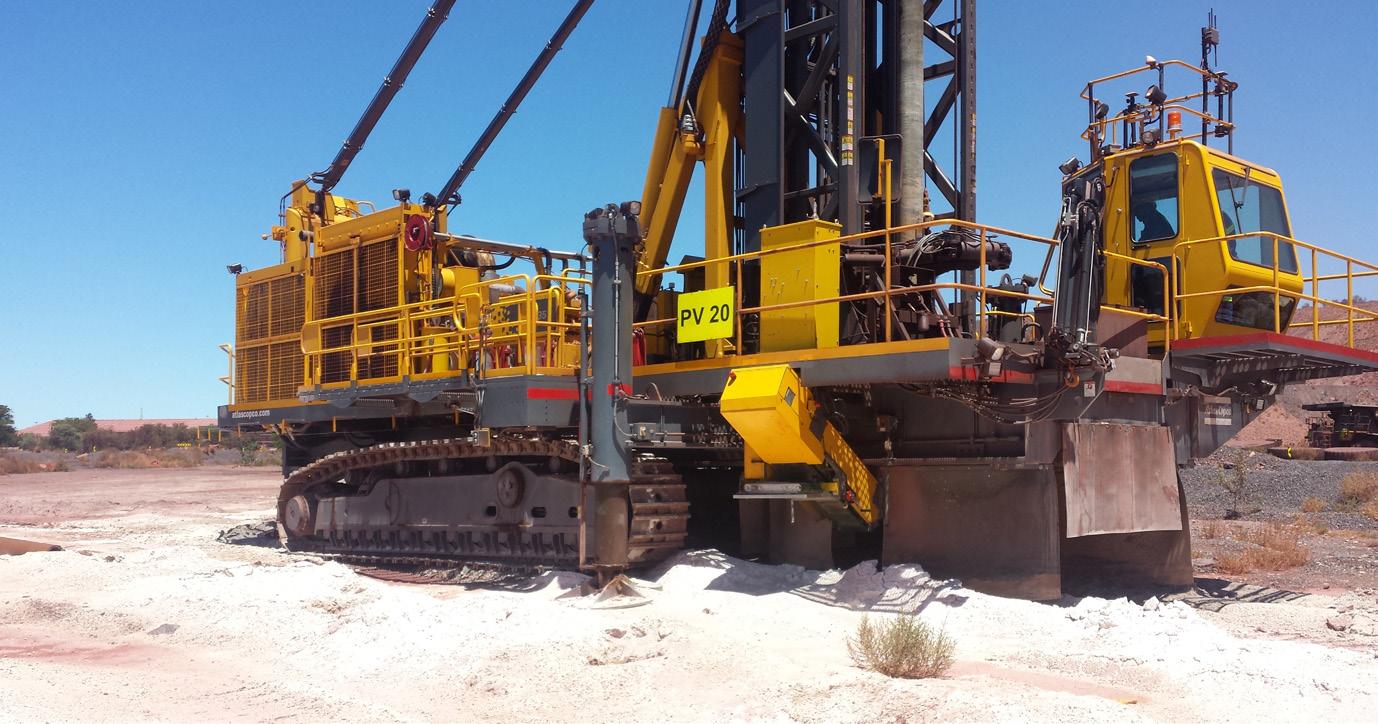
Conveyor belt analyzer for Bulk Ore Sorting
IMA Fast Conveyor Belt Analyzers (FCA) analyze the ore on the conveyor belt, typically after primary crushing, before the ore and waste rock are mixed in intermediate stockpiles. The FCA provides the elemental composition of the material on the conveyor continuously providing the average grade of the material every 10 to 30 seconds. The short analysis time reveals the real ore grade and waste rock on the belt providing mine grade control feedback for improving the quality of mining. Furthermore, the IMA FCA located on top of the belt and a sorting chute located at the end of the conveyor enable Bulk Ore Sorting, separating the ore from waste rock with high accuracy and without capacity limitations.
Economic impactCase of Bulk Ore Sorting
To assess the economic impact of each mine case, IMA typically does a rental period where firstly the analyzer system is calibrated with real samples, then installed on a conveyor belt to analyze the material and to follow how the elemental grades vary over time. Below we demonstrate a sample set of real case data of a large-scale copper production utilizing FCA to analyze the copper grade.
The data visualizes how the grades vary with time, how much and how often. When a certain cut-off grade is applied, and the analyzer system is connected to belt scale, the amount of waste rock dilution can be quantified.
Furthermore, the economic evaluation can be made within the given time period to assess what is the economic impact of waste rock going to the concentrator.

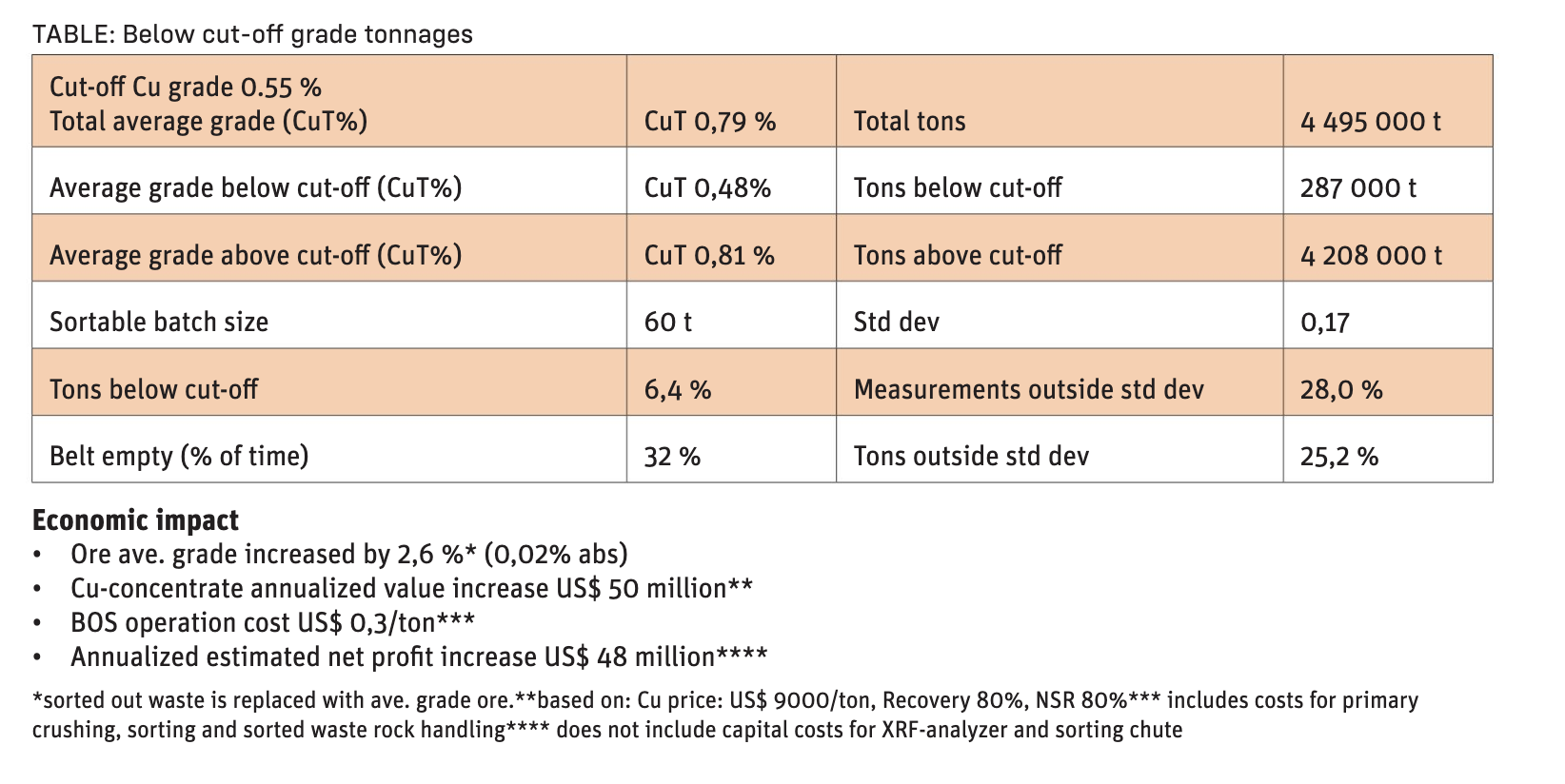
Final Words
In conclusion, reducing waste rock dilution in mining operations can yield significant benefits for the economic and environmental performance of the mining industry. IMA Engineering has been a pioneer in online analysis for decades and advocating its importance in the efficient mining practice. During recent years the mining industry has taken leaps to become more digital and, with autonomous mining in mind, more adaptive to advanced technologies and their capabilities to improve the processes. Often the real amount of dilution and its variability in the mine are unknown and for this reason IMA has conducted grade control and ore sorting evaluations in copper, iron, nickel, gold and silver mines around the world. IMA has developed a fast and light way of making such evaluations by deployment of field rental equipment, which we are happy to continuously utilize to help the mining industry to tackle their current and future challenges. ▲
TEKSTI: VILLE HAKALA
